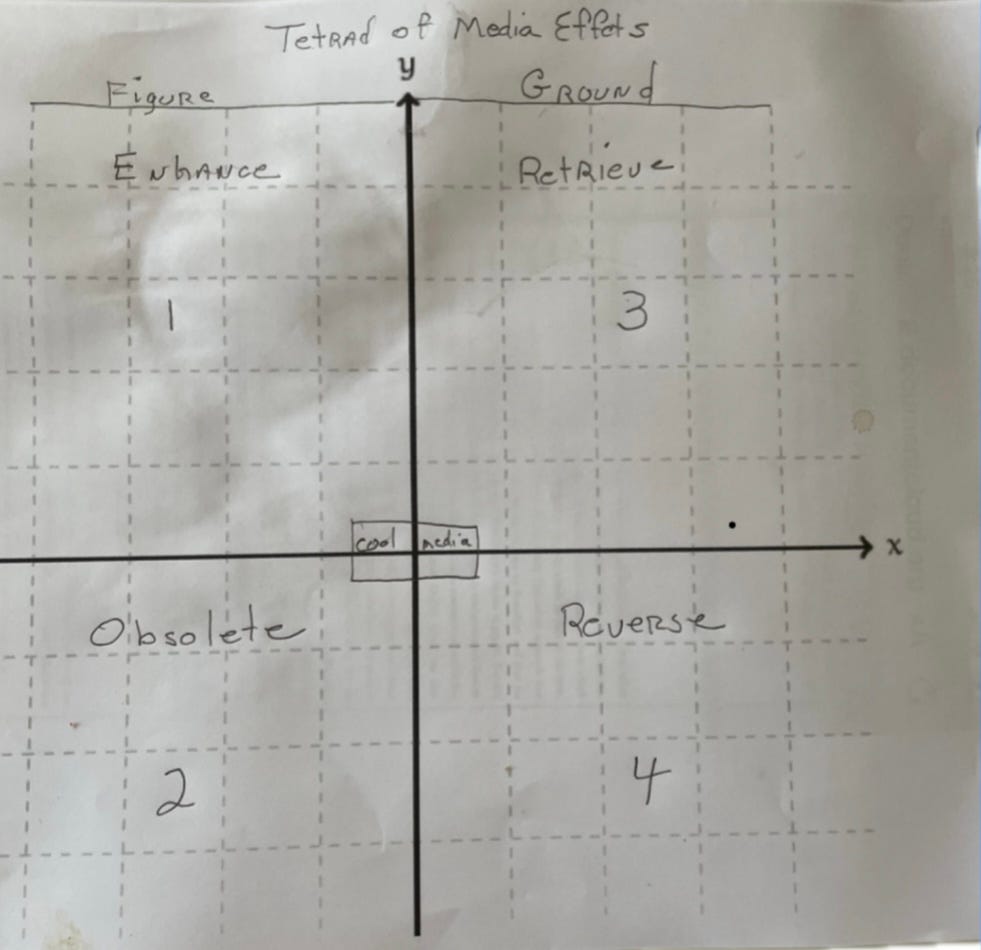McLuhan’s Tetrad as Medium
In a discussion about McLuhan’s tetrad of media effects, Justin Oberman, writer and marketing consultant, posted an interesting challenge.
To test the tetrad as a framework for assessing media effects, we must “put itself through itself,” says Oberman.
Treating an assessment tool for media as a medium grabbed my attention. It’s the thing within the thing, like the show within a show.
When I was a kid, I used to watch reruns of The Dick Van Dyke television show. The storyline was a group of comedy writers for a television show, The Alan Brady Show.
I was fascinated by the show within a show. It provided a simultaneous inward and outward view of television show production.
Oberman’s “put itself through itself” is reminiscent of this view and offers an interesting challenge.
My take on McLuhan’s tetrad as a medium.
Items in each quadrant are below the chart. I saw no need to subject the gentle reader to more of my chicken scratches than necessary.
1. Enhance: The tetrad creates, literally, an “inside the box” way of thinking. It’s compressed in space, encouraging the meaningful observations within each category.
It forces focused and critical thinking on the elemental issues of the medium being evaluated.
2. Obsolete: The elimination of deflection, whatsboutism, and a host of logical fallacies that have become a near-dominant method of discourse in the electronic/information age.
Enhanced focus obsoletes haphazard discourse.
3. Retrieve: Simplicity and fun. I have fond memories of brainstorming sessions with a large notepad and a marker. The tetrad template retrieves that group camaraderie.
To some degree, the tetrad repurposes the business-related SWOT analysis for use with a new medium.
4. Reverse: Overuse could make the technique tedious and boring, watering down its usefulness with it eventually being abandoned or sparingly used.




